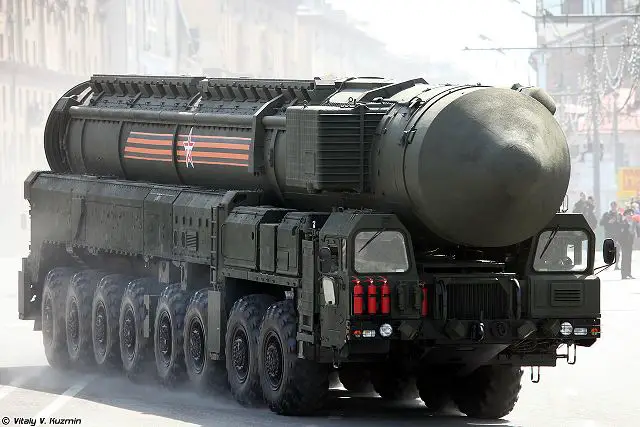Strategic Missile Force of Russia will receive simulators for drivers of RS-24 Yars SS-29 ICBM TASS 12504172
|
|
|||
|
Military Defense Industry Technology - ICBM driver simulator
|
|||
|
|
|||
| Strategic Missile Force of Russia will receive simulators for drivers of RS-24 Yars SS-29 ICBM. | |||
|
The Russian Strategic Missile Force is to be fully outfitted with unique simulators for the drivers of the self-contained launchers of the RS-24 Yars (NATO reporting name: SS-29 Yars) ground-mobile intercontinental ballistic missile (ICBM) system. Each missile regiment will also get training aids for the troops to learn to operate the auxiliary hardware of the cutting-edge missile system, according to the Russian Defense Ministry’s press office.
|
|||
|
|
|||
|
|
|||
|
In the near future, the unique simulator will be fielded with the Irkutsk, Barnaul and Bologoye missile large units stationed in the Irkutsk Region, Altai Territory and Tver Region respectively. The pace of fielding advanced training aids to the Strategic Missile Force will increase. The branch will have received about 1,000 simulators by 2020 to train crews for the latest missile systems. Some have already gone on line in the regiments of the Nizhny Tagil, Novosibirsk and Kozelsk ICBM divisions converting to the Yars. The simulators save each of the divisions annually over 150,000 liters of fuel spent on driver training. The Strategic Missile Force will have saved more than 4 million liters of diesel fuel for its ground-mobile ICBM systems by training its drivers on simulators.
The branch’s fleet of training aids exceeds 1,500 items and allows modeling all actions taken by the troops on alert duty in various situations, including emergencies, without them having to move the real hardware about. The simulators save up to 80% of the combat vehicles’ service life. The missile crews’ preparation for alert duty is characterized by their inability to use their materiel for training purposes, because all of it is on alert, i.e. ready for launch 24/7, and cannot be disturbed. The cabin of the advanced ICBM driver simulator is a dead-ringer for the real one. The road and tactical situation is shown on three large displays. The cab sits 2 m above the ground on telescopic supports tilting, extending or retracting depending on the situation. Inside, the upper instrument panel mirrors the actual one and the side-mounted ones have been replaced with the LCDs, with the left one showing the characteristics and the right one the imagery fed by the rear-view camera. The computer makes everything quicker than in real life, but it is the right sequence of actions than matters, rather than time. Malfunctions have been included into the software program to train to deal with emergencies. The new simulator is unique because it affords the trainee an absolutely realistic vision system and allows modelling routine situations and emergencies in real time owing to its six degrees of freedom of motion. |
|||
|
|
|||
|
© Copyright 2017 TASS. All rights reserved. This material may not be published, broadcast, rewritten or redistributed.
|
|||





























